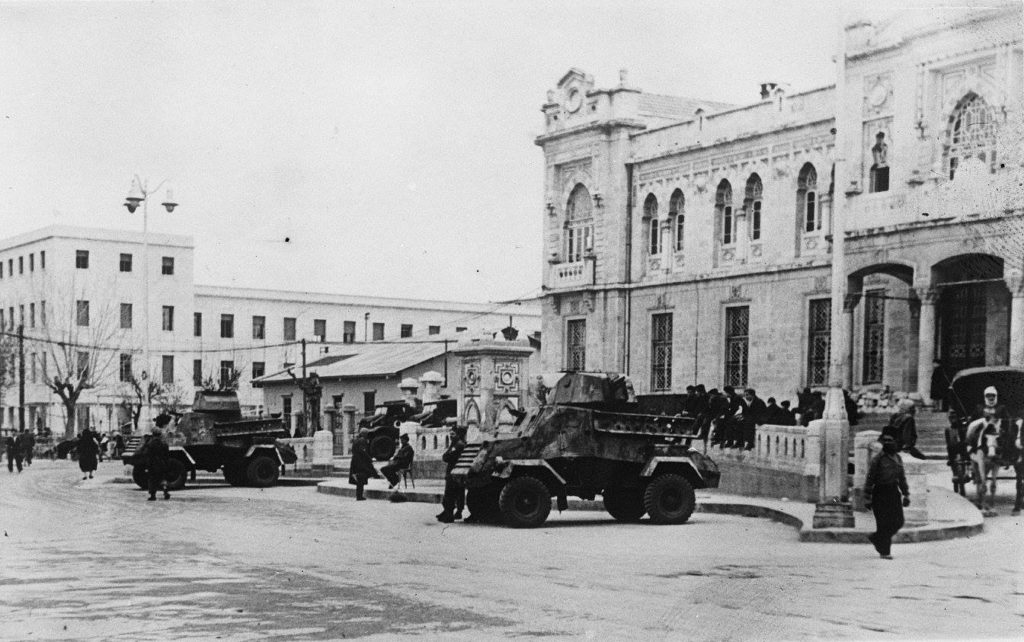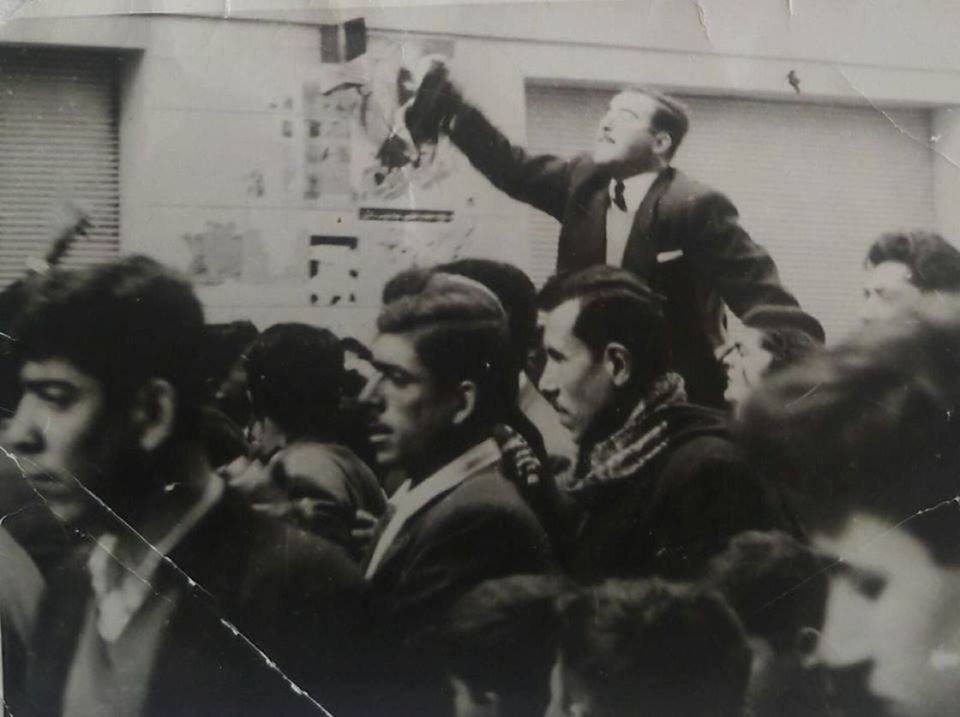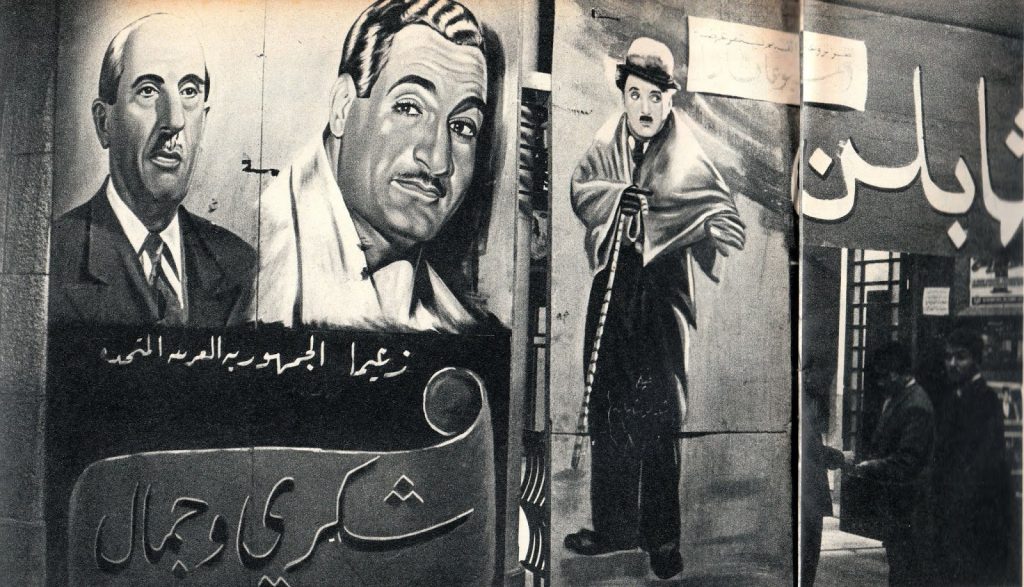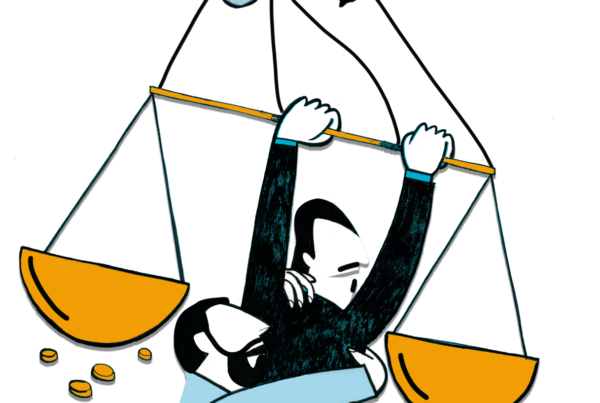The struggle between the military and civil state
In 1949, the first coupe took place in Syria after a relatively stable, civil rule in the country. Led by Husni Al-Zaeem, the coup ousted Shukri Al-Kwatle, which was the beginning of nearly a twenty coup that took place between 1949- 1970. At the onset of his rule, Al Zaemn announced a series of decrees and laws that solidified the modern civil state model that Al-Zaem predecessor had worked to establish. Improving women’s rights, limiting religious figures power in the State Act. Throughout his policy, the large segment of the society could adduce that Al-Zaaem was trying to attract the emerging sectarian parties in the country. These steps subsequently, after the unfolded news about Al-Zaem’s relation with the Americans which sparked a local descent movement against him. Al-Zaem counter-reaction was suspending many parties in the country, nullified various rights and liberties of journalism, media and all aspects of political dissent activities. As a result, the subsequent coup took place by Sami Al-Henawe which was applauded by the Syrian people. The new coup leader endeavored to embed civil rights in the country. He restrained the military’s interference in the civic life and political sphere. A plurality of party policy was embraced allowing the establishment of new parties to freely work in the country, yet except for socialist parties. Even though the Hashem Al-Atasi was elected as a president, the army domination was relentless. He supported women’s participation in the newly elected parliament. Al-Henawe’s significant endeavor was to form an Arab Union with Iraq; however, this step led to his overthrow by Adeb Al-Sheshakle who maintained relatively the civic life in the country. Al Sheshakle dominated his power grip in the country and turned into a dictatorship military state. He dissolved the parliament in 1951. In 1953, he appointed himself to be the president after a public election to which had only him as a candidate in the country. However; he willingly stepped down to Hashim Al-Attasi, to temporarily run the country until a new president is elected, due to his worries of significant division that was to paralyze the Syrian army.

During Al Attasi’s rule, the Syrian people attempted to end the military’s intervention and prevent a comeback of the similar military state of Al Attasi predecessor Al-Sheshakly by civil movement and mass protests. As a result of the immense public pressure, the new regime enacted the 1950 constitution in the country after being halted during Sheshakly’s rule who derogated people’s rights and liberties in the constitution version that was adopted and implemented during his rule. The democratic movement was steadily improving forward, conducting both parliament and the presidential election. The electoral outcome accredited Hashem Al Attasi as the democratically elected president who democratically ruled Syria between 1954-1955.

The Syrian-Egyptian Arab union
While the union was popular and publicly demanded by both nations; however, the conversion to the new union was not established through a transparent way between both state’s formal authorities. The army did not consult the government nor parliamentary or had presidential consent to which was considered as a coup against the legitimate and democratically elected authorities. The new union brought a new united constitution which was written down by prominent military coup champions in 1952. Liberties, political rights and parties’ plurality were abolished by the Nasri loyalist agents in Syria. The civil and political life were exclusive to the Nari and previous Baath supporters. The military authority established the Ministry of Labour and Social Affairs aiming to facilitate the operation of civil associations, organizations, clubs and all political practices and in the country, which officially kicked off in 1958. The state new organ working to dominate the civil society organizations and impeded any anti Nasserist initiative in the country.

Obstruction civil society movement, freedom and rights
Before the announcement, laborers had by law rights to protest, strike from work and organize labor associations. In 1958, two weeks post to the union’s imposition these rights were squashed by the new regime to dismantle and re-mobilize the working labor force. Throughout the ministry of labor and social affairs, led by the Ba’athist former member and military officer Mostafa Al-Hamdon the new regime worked to disfunction the labor civil society bodies. It continuously interfered with trying to restrain their efforts and degrade their work in the internal election and/or closing their official offices.
Efforts to restore labors and civil rights
According to Kamal Deeb’s book ‘Syria’s history’, approx. Of 300 laborers associations representatives assembled in January 1960 in Damascus calling out for Abdul Naser to uphold labor’s rights, end the Arabic Socialist Union prevalence in the labor sphere and amend labor laws to be fairer for the working class. The authoritarian regime’s reaction was to arrest the participants in the protest. The mass arrest led to the resignation of the Executive Committee of the Labour Union in solidarity with the arrested protesters; however, the authorities did not make any policy change to resolve the intense situation. In fact, the Nasir’s government appointed a new pro-socialist union committee who were fully subordinate to the Union military leadership.

The past political and civil rights Syrians have gained radically got decayed. For instance, labor lost their rights of assembly or establishing organized bodies that represent and advocate for their rights. During the unity Syrian lived the authoritarian regime where police, intelligence agent’s role and power inflated. Cases of enforced disappearance, torture, death under extreme torment in the intelligence secret detention center experienced dramatic surged. For example, a well-known anti-Nasseri/ Baath figure Farajallah Al-Helo the secretary-general of the Syrian Communist Party was abducted, tortured and killed in Damascus in 1959.
The Nasserist authorities continued to deplete the political life in Syria. The original parliament was replaced with what so-called [Nation Council] whose members, unlike the previous preliminary elected members. The Nation Council members were being appointed by Cairo’s dictatorship leadership.

Death of the Republican Arab Union
In 1961, the partition was implemented by colonel Abdul- Kareem Al-Nahlawe. The colonel transferred the country to its democratic government institutionalized country form by assigning a temporary transitional government to run the country and the transitional period.
The appointed government’s high priority was to end the Emergency Statues in the country, restore the freedom and liberties in the country, namely freedom of expression and journalism. However, its endeavors were being relatively in conflict with the remaining Nasrrist agents in the state’s governmental bodies. Successfully, these efforts dismantle the authoritarian state arms and enacted the civil liberalizes, ended emergency status and relatively reintroduced civic rights in the country.
In June 1962, mass movements took off to the street to demand democratic implementation and amplification of civil rights for the people. The popularity of this movement contributed to lifting the ban on the media and freedom of speech and the party’s activism.
According to Al-Deeb’s book, a sum of twenty pamphlets were published only in two weeks of lifting the ban on the party’s activities. The publications urged the government for more reforms and enact a large spectrum of liberties in the country. The emergency statue was lifted and after drafting a Party Act, a new parliamentary election was planned in July 1963.
In contrast, the initiative did result in zero gains and the military interference dominated the state’s executive and governmental institutions. In parallel, The Baath party officially controlled Iraq’s rule after a bloody coup in the county in February 1963, where the military sector removed the civil authority. However, his intervention did not have the same impact in Syria. Until a new military coup once again by Abdul Karem Al Nahlawe. He worked to constraints any enterprise that worked to uphold social and civil rights. In fact, he instilled military intervention control in the government and the state’s ministries. Eventually, Nahlawe’s was overthrown by what became the final Baath coup which led the defense minister Hafez Al-Assad to become the Syrian’s presidency on the 8th of March coup.
Coups within the military circle: March 8th, 1963: Militarized state and abolishment of civil society role and civil rights.
Battle was ongoing among the Baath’s military divisions and figures endeavoring to render the rule of the country under their superiority. With the Iraq Baath branch collapse losing power in Iraq after a coup led by Abdul Salam Aref, the Syrian Baath branch members were overwhelmed with fears the same fate. Therefore, it imposed again martial laws, military authorities expelled and uprooted any endeavor that tried to topple or challenged their power trying to avoid recurrence of what occurred in Iraq.
Since 1963, the Baath occupied Syrian’s rule. Its leaders endeavored to prevail in their hegemony over the civil society movement and civic associations. The party’s widespread policy of Baath’s ideology upon all state, domestic associations. Their intrusion aimed at the executive level of leadership and worked to change the system from the democratic electoral system to an appointing one. In this way, the party ensured that the high level of these bodies is loyal to the ruling party. Associations were transferred to have full Baathist loyal members. For instance, the farmers’ union, established in 1964, had rejected any member who is not faithful to the party and worked to replace any member of staff of the association whose loyalty was equivocal.
Similarly, the Student’s Union which enjoyed freedom relatively from the Baath dominance; However, in 1966 all members of the union mass arresting campaign took place by state intelligence of the union’s members and replaced them with loyalist ones. The union became like a sub-Baath branch, fully funded by the party endured and spread Baath ideology among university students until the time being. In 1968, the Revolution Youth Union (RYU) was established to be the Baath arm in the country to indoctrinate youth and recruit them. The union’s members’ age range was between 14-20, in a later stage, the membership to the RYU became compulsory in the governmental schools.
One the one hand, the Baath party established and controlled local, towns, province councils as well as public associations and professional bars that banned all forms of politically affiliated activism. On the other hand, the parliament was used to amplify the Baath dominance. It passed the Local administration law which controlled small local bodies and tied them directly with the regional command of the socialist Baath Arab party.
Local organizations played in the military state to prevail and expand the Baath’s power grip across the country. It has been working as an agency to scrutinize and censor locals and suppress any decent endeavor before it even begins…
In 1969, the military state reproduced the transitional constitution, which pronounced the solo party ruler and leader of the Syrian state and society.
The constitution eliminated people’s rights that grant or allow any level of freedom, assembly or speech. Utilizing arbitrary arrest throughout the advantage of the emergency status in the country, the Baath continued to overturn any political party, labor association, farmers club or student institute to work but under its policy. Both Baath’s incumbent and old policy had been to bring together all civil society bodies to operate under its rule using force or intimidation to bring people all together under their umbrella.



